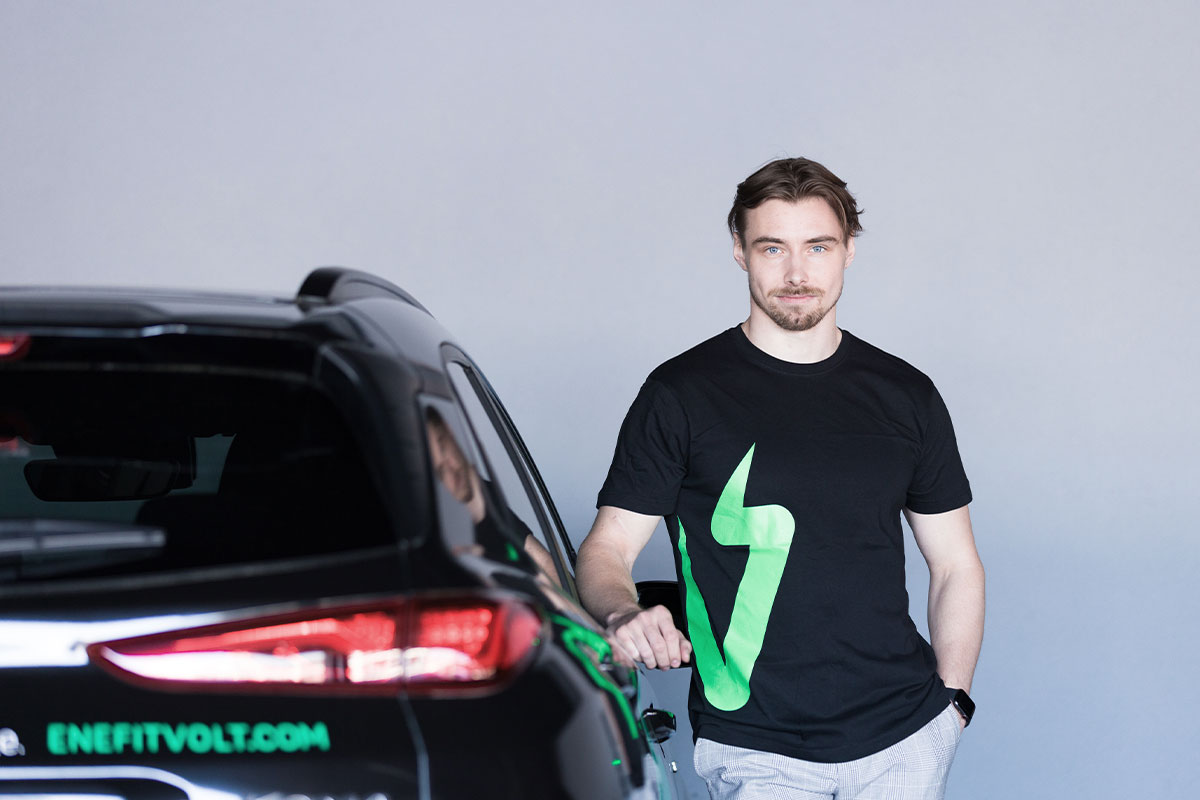Experts have their say vol. 2: We are waiting for a decrease in electric car prices to introduce smarter solutions
The triumph of clean transport is infallible, but it is clear that achieving zero emissions is a marathon, not a 100-metre sprint. Enefit Volt asked experts in their field what the trends and challenges are for the coming years. In the second story, Kert Pääbo, Business Development Manager at Enefit Volt, and Rein Karofeld, Head of Leasing at SEB, have their say.

Kert Pääbo: Transport and energy will be inseparable in the future
Business Development Manager at Enefit Volt
The uptake of electric cars has so far been heavily influenced by the availability and accessibility of charging solutions. And, while small compared to petrol and diesel cars, charging still has a cost. The prices of electric and internal combustion engine vehicles are moving inexorably towards convergence, but electric technology has a trump card that fossil fuels cannot match: with smart charging solutions that are added in the future, a parked car can be transformed into an opportunity to earn extra money, further reducing the total cost of ownership. But let us review the current situation.
More and more public charging points are being built. Last year, Enefit Volt alone installed a total of 30 new public chargers, bringing fast charging for European standard cars to 11 counties where it had previously been unavailable. In addition, a number of known players have entered the charging market, including Alexela, Vonk, Ruex, who are also setting up public charging points.
An electric car is primarily purchased if it can be conveniently charged at home or at work. For clean transport to triumph, it is essential to ensure a charging opportunity at key anchor points. This will be greatly helped by the revised Building Code, which entered into force last year and obligates all new apartment buildings to have charging facilities, and new non-residential buildings to install chargers.
Learn more about Enefit Volt’s smart charging solutions!
The law does not mandate making charging smart, but in the world of electric cars, being smart is not an option – it is an obligation. The nearest innovation will be the automatic rescheduling of charging to hours of the day with the cheapest electricity. In the conditions of steep price rises and falls, it is possible to save up to 50% on charging. The next big change will be revolutionary, however, giving the electric car the role of a battery connected to the electrical grid alongside its transport function.
It is estimated that electric cars will provide at least 20% of the global daily demand for system services in 2050, or, to put it simply, if five power plants were needed in the past, electric car batteries will now provide one of the five. One million conventional electric cars will provide a total of nearly 75 gigawatts of storage capacity, which is 100 times more than today’s largest industrial storage battery. In addition, as citizens, we would have to pay for such large batteries. It makes much more sense to make the electric cars available for people and businesses to use. All the more so because 96% of the time they are parked anyway.
While a few years ago this may have seemed like a fairy tale, today, dozens of such pilot projects are underway around the world, and last spring Volkswagen announced that all of the Group’s electric cars (including Škoda, Audi, Seat, VW) will already be fitted with two-way charging capability at the factory. It could reach the masses by 2025 at the latest, if not earlier.
The latest trend is an increase in charging speeds, driven by developments in both cars and chargers. A number of car manufacturers including Porsche, Audi, Kia and Hyundai are moving towards battery technology above 800 V, which allows for charging speeds of up to 270 kW. This means it takes less than 20 minutes to charge from 0 to 80%, and the charging experience is becoming more and more like refuelling a regular car.

Rein Karofeld: We are expecting a decrease in the purchase prices of electric cars
Head of SEB Leasing
It is still too early to say that Estonians have fully embraced the electric car, but more and more are buying them. In 2021, SEB Leasing financed three times more electric cars than in the year before, and this only applies to 100% electric cars. In fact, in 2020, we took two steps forward at once, and today we only count electric cars as environmentally friendly vehicles.
There are a number of predictions about the convergence of the cost of ownership of electric cars and internal combustion engine vehicles, predicting that this will happen sooner rather than later. As a green-minded company, SEB Leasing also supports the clean transport breakthrough. For example, the leasing rate for electric cars is significantly cheaper than for so-called conventional cars, at only 1.45%. For hybrid cars, we have a campaign at 1.89%, and the pricing for a fully fossil fuel-based vehicle goes up from there. I stress that we are talking about average levels here, which do not include campaigns.
Although the technology is new and constantly changing, we are doing our utmost to support and advise both private and business customers in purchasing their first electric car. I would also like to separately emphasise the need for state support and measures, and I call on the state to offer support mechanisms based specifically on simplicity.
Support measures can make an important contribution to boosting sales of electric cars, as high acquisition costs, coupled with a lack of charging infrastructure, are a major barrier to breakthrough. In 2023 and 2024, we expect the purchase price of electric cars to fall, or if not, then narrow the gap with internal combustion cars. I do not see a fall in car prices. Thus, an increase in the price of cars with internal combustion engines would also reduce the gap.
